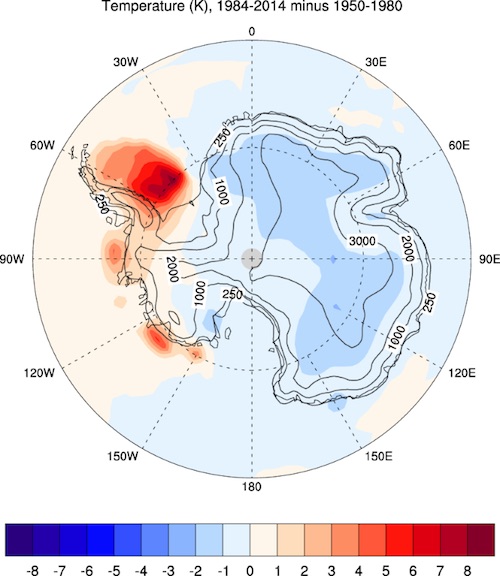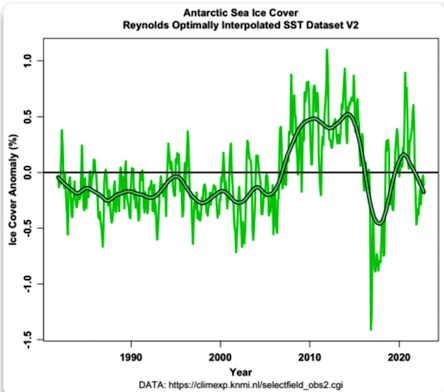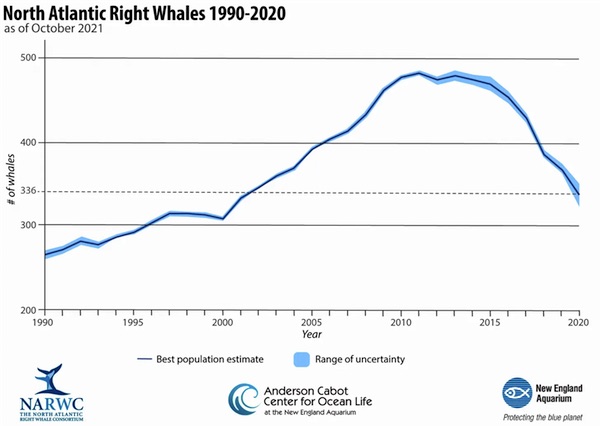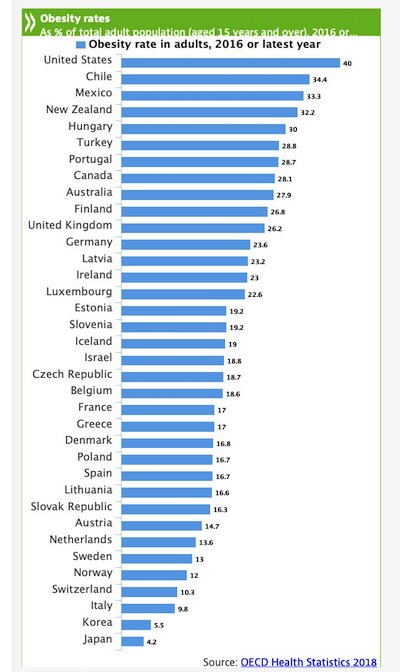
John M. Fox WCBS studios, 49 East 52nd Street, NYC 1948



Tucker Pfizer



Fourth Reich
https://twitter.com/i/status/1619821761239085057

Joe Rogan cobalt

Rogan diver
https://twitter.com/i/status/1619856341904035840

Trump Star Wars
https://twitter.com/i/status/1620248325546209280




“..who can tell whether accountability might restore our institutions at this point. We may be too far gone.”
• The War Against Us (Jim Kunstler)
All this criminal misconduct is connected in a foul matrix of lawbreaking. The fact-patterns are well-established. Dozens of excellent books have catalogued the misdeed of RussiaGate and scores of websites daily dissect the shady intrigues around the “vaccine” crusade. The infamies of gross election interference have been systematically laid-out in the Twitter Files of the past two months. Many books, published essays, and videos substantiate the reality of massive ballot fraud in 2020 and 2022, including the felonious role of Mark Zuckerberg’s front org, the Center for Tech and Civic Life, and the election law manipulations or Lawfare goblin Marc Elias. There’s an understandable wish that upcoming hearings in Congress will lead to a reckoning for all of this. To banish consequence from public life, as we have done, is a pretty grave insult to nature, but who can tell whether accountability might restore our institutions at this point. We may be too far gone.
The US is visibly collapsing now: our economy, our financial arrangements, our culture, our influence in world affairs, and our basic consensus about reality. We’re entering a phase of disorder and hardship that is likely to moot the further depredations of a government at war with its people. For one thing, it’s becoming impossible to pretend that this vicious leviathan has the money to carry on because the money is only pretending to be money. It’s no wonder that the collective ability for sense-making has failed. It will be quickly restored by each of us in the scramble to survive these disorders and hardships. The bewildering hypotheticals of recent years begin to dissolve like mist on the mountain and things come back into focus: your health, your daily bread, your shelter, your associations with other people close to you, your values, and most of all the power of your own choices. Nature, much insulted and maligned, will sort out the rest.
Read more …

Why are the voices of reason always the smaller, less powerful EU nations?
• Ukraine Will Never Retake Crimea – Croatian President (RT)
Increasingly lethal military aid to Ukraine from NATO powers is “deeply immoral” and will only extend Kiev’s bloody conflict with Russia, causing more casualties and heightening the risk of nuclear war in a pointless pursuit of absurd goals, Croatian President Zoran Milanovic has claimed. “I am against sending any lethal weapons there,” Milanovic told reporters at a briefing in Petrinja, south of Zagreb. “It’s only prolonging the war. What’s the goal? Carving up Russia? Regime change? They’re talking about partitioning Russia. This is madness.” Milanovic made his comments after the governments of Germany and the US last week announced that they had decided to send battle tanks to Ukraine.
Moscow has warned that such aid creates a greater risk of escalation, especially if Western weapons are used to strike Russian cities or try to seize Russian territory. Nevertheless, Washington and its top NATO allies have pledged to continue arming Ukraine for as long as it takes to win the conflict – however Kiev defines victory. Ukrainian President Vladimir Zelensky has vowed to retake all lost territories, including Crimea, which became part of Russia following the overthrow of Kiev’s elected government in 2014. Milanovic argued that Crimea “will never be Ukraine” – a point on which even Germany’s generals agree. “This is deeply immoral, what we’re doing, the collective West,” the Croatian president said. “German tanks will just unite the Russians, and China. My goal is to distance ourselves [Croatia] from it, to not be circus dogs. Any kind of participation in this is deadly dangerous.”
Milanovic said efforts to provoke conflict with Russia had been ongoing since 2014, “and a war broke out.” He warned that NATO leaders shouldn’t assume that they can treat Russia like Serbia, which the Western bloc bombed in 1999 amid violence in Kosovo. The breakaway province later declared its independence from Serbia. “Please understand Russia is not the same as Serbia,” Milanovic said. “That’s a painful fact, and dangerous. We annexed Kosovo, us and the international community. It was taken from Serbia. Did we not do it? Did we not recognize Kosovo? Oh it’s not an annexation, it’s a seizure? Whatever. This isn’t about Kosovo, but about the concept.”
https://twitter.com/i/status/1620116326101712896
Read more …

Recommended.
• Is NATO Helping Ukraine Fight Russia Or Using Ukraine To Fight Russia? (Diesen)
The Western public, like others, are justly appalled by the human suffering and the horrors of the Ukrainian war. Empathy is one of the great virtues of humanity, which in this instance translates into the demand for helping Ukrainians. Yet, propaganda commonly weaponizes the best in human nature, such as compassion, to bring out the worst. As sympathy and the desire to assist the displaced are used to mobilize public support for confrontation and war with Russia, it is necessary to ask if the Western public and Ukrainians are being manipulated to support a proxy war. The US-led military bloc commonly depicts itself as an innocent third party that merely responds to the overwhelming desire of the Ukrainian people to join its ranks.
Yet, for years NATO has attempted to absorb a reluctant Ukraine into its orbit. A NATO publication from 2011 acknowledged that “The greatest challenge for Ukrainian-NATO relations lies in the perception of NATO among the Ukrainian people. NATO membership is not widely supported in the country, with some polls suggesting that popular support for it at is less than 20%”. In 2014, this problem was resolved by supporting what Statfor’s George Friedman labelled “the most blatant coup in history” as there were no efforts to conceal Western meddling. Regime change was justified as helping Ukrainians with their “democratic revolution”. Yet, it involved the unconstitutional removal of the elected government as a result of an uprising that even the BBC acknowledged did not have majority support amongst the general public.
The authorities elected by the Ukrainian people were replaced by individuals handpicked by Washington. An infamous leaked phone call between State Department apparatchik Victoria Nuland and Ambassador Geoffrey Pyatt revealed that Washington had chosen exactly who would be in the new government several weeks before they had even removed president Yanukovich from power. Donbass predictably rejected and resisted the legitimacy of the new regime in Kiev with the support of Russia. Instead of calling for a “unity government”, a plan for which Western European states had signed as guarantors, NATO countries quietly supported an “anti-terrorist operation” against eastern Ukrainians, resulting in at least 14,000 deaths. The Minsk-2 peace agreement of February 2015 produced a path for peace, yet the US and UK sabotaged it for the next 7 years.
Furthermore, Germany’s Angela Merkel and France’s Francois Hollande recently admitted that both Germany and France considered the deal an opportunity to buy time for Ukraine to arm itself and prepare for war. In the 2019 election, millions of Ukrainians were disenfranchised, including those living in Russia. Nevertheless, the result was a landslide with 73% of Ukrainians voting for Vladimir Zelensky’s peace platform based on implementing the Minsk-2 agreement, negotiating with Donbass, protecting the Russian language, and restoring peace with Moscow. However, the far-right militias that were armed and trained by the US effectively laid down a veto by threatening Zelensky and defying him on the front line when he demanded to pull back heavy weapons.
Pressured also by the US, Zelensky eventually reversed the entire peace platform the Ukrainians had voted for. Instead, opposition media and political parties were purged, and the main opposition leader, Viktor Medvedchuk was arrested. Subverting the wishes of Ukrainians in order to steer the country towards confrontation with Russia was yet again referred to as “helping” Ukraine. [..] Following NATO Secretary General Jens Stoltenberg’s recent Orwellian statement that “weapons are the way to peace”, it is worth assessing if NATO is helping Ukraine or using Ukraine. NATO powers have stated that they are supplying Ukraine with weapons to have a stronger position at the negotiating table, yet one year into the war, no major Western leaders have called for peace talks. NATO has a powerful bargaining chip that would actually help Ukraine, which would be an agreement to end NATO expansion toward Russian borders. However, whitewashing the bloc’s direct contribution to the war prevents a negotiated settlement.
US munitions
Read more …

The EU will not survive this.
• Ukrainian PM States Timeline For EU Membership Hopes (RT)
Ukraine sees itself as part of the EU in two years, but even its most ardent supporters in the bloc believe that target to be overambitious, Politico reported on Monday. The deadline was set by Prime Minister Denis Shmigal ahead of an EU-Ukraine meeting in Kiev next Friday. “We expect that this year, in 2023, we can already have this pre-entry stage of negotiations,” Shmigal told the news outlet. Ukraine applied for EU candidate status last February, after Russia launched its military operation. Brussels granted Kiev that status in June, though the timing for accession remains a matter of debate. Kiev and its biggest backers, such as Poland, claim Ukraine deserves to be fast-tracked to full membership. More skeptical nations have argued that it may take considerable time before the country meets the criteria.
French President Emmanuel Macron warned in May that the accession process “would probably take several decades,” unless the EU lowers its requirements “and also partially the principles that we hold.” Türkiye has been kept waiting on the EU’s doorstep since 1999, while Ankara’s request to join the European Economic Community, the EU’s predecessor, was filed in 1987. European Council President Charles Michel, who traveled to Kiev earlier this month to offer reassurances that Ukraine will eventually become part of the EU, indicated that the bloc’s leadership has no intention of bending the rules. “If it means changing the rules and procedures, no, because we believe in and defend the rule of law,” Michel said in an interview last week when discussing what fast-tracking Ukraine could mean.
Politico described Shmigal’s deadline as “throwing down a gauntlet to the EU establishment.” The head of the Ukrainian cabinet said he expects progress in specific areas, including the continued suspension of tariffs and quotas for Ukrainian goods, and inclusion into the EU’s mobile roaming area. Kiev could take certain steps to allay any criticism from the EU, such as rolling back controversial legislation which regulates how justices of the Constitutional Court are appointed, according to Politico. The reform was passed in December, with Kiev ignoring recommendations from the Venice Commission to modify the draft to prevent political influence on a special body tasked with screening candidates. President Vladimir Zelensky has been at loggerheads with the Constitutional Court since 2020, when he launched a campaign to remove the chief justice after the court struck down a bill that the presidential office wanted passed into law.
Read more …

“..the stage for the conflict was set by NATO’s expansion in Europe and its refusal to acknowledge Russia’s security concerns.”
• Beijing Explains US Role In Ukraine Conflict (RT)
The US is the “initiator and biggest promoter” of the crisis in Ukraine, Beijing has said, commenting on Washington’s reported claims that state-run Chinese companies were providing non-lethal aid to Russia. If the US government actually wants to help the Ukrainian people and see the crisis end as soon as possible, it should “stop sending weapons and reaping the benefits of war,” Chinese Foreign Ministry spokeswoman Mao Ning said on Monday during a news briefing. She dismissed the claims of assistance to Moscow, which were reported in the Western media last week, as “unfounded suspicion and accusations” and said Beijing would not accept “groundless blackmail” or discrimination against Chinese companies by Washington.
The reports were based on an anonymous source described by Reuters as “familiar with the situation.” “What we’re seeing is non-lethal military assistance and economic support that stops short of wholesale sanctions evasion,” the source was quoted as saying. The person added that Washington was not sure if the Chinese government was aware of the “activity” and that it had communicated its concerns to Beijing. The US government publicly threatened China with consequences for any assistance to Russia in circumvention of the economic sanctions imposed by Washington and its allies.
When asked about the alleged assistance last Tuesday, White House press secretary Karine Jean-Pierre said the US was “monitoring the situation” and would “continue to communicate to China the implications of providing material support” to Russia. She pledged that the US would support Ukraine for “as long as needed.” The US has already allocated over $100 billion related to propping up Kiev in its fight against Moscow. Beijing has criticized Russia for sending troops against its neighbor but has said that the stage for the conflict was set by NATO’s expansion in Europe and its refusal to acknowledge Russia’s security concerns.
Read more …

“..leaving the British army with hardware that is at least 30 years old and in dire need of replacement.”
• US Skeptical Of UK Military – Sky News (RT)
A senior US military official confidentially told British Defence Secretary Ben Wallace that the UK’s armed forces are no longer on par with those of the leading world powers, Sky News claims. The broadcaster, citing anonymous defense sources, said that years of cost-cutting measures by successive governments have made the country’s military a “hollow force.” The report, which came out on Monday, alleges that the unnamed American general had a frank conversation with Wallace and several other British officials last fall. The conclusion of the US general regarding the UK’s fighting capabilities was unsettling for London: “You haven’t got a tier one. It’s barely tier two.” According to Sky News, the general classed the armed forces of the US, China, Russia, and France as tier-one powers, with Germany and Italy representing tier-two armies.
Several unnamed British defense sources confirmed to the broadcaster that the nation’s military is currently in a sorry state. One official was quoted as saying: “It’s an entire service unable to protect the UK and our allies for a decade.” The UK military would reportedly run out of ammunition “in a few days” if a conflict broke out. Moreover, the armed forces would likely be unable to defend the skies against the level of missile and drone strikes currently seen in Ukraine, the broadcaster claimed. The report said that 10 Downing Street has repeatedly cut the defense budget following the end of the Cold War, leaving the British army with hardware that is at least 30 years old and in dire need of replacement.
London’s active role in supplying Ukraine with weapons over the past 11 months has further diluted its own fighting capabilities, the news outlet said. Another major issue highlighted by anonymous defense sources is chronic staffing shortages. With only 76,000 personnel, the British armed forces are less than half the size they were in 1990, Sky News claims. However, according to the government’s plans, the military will shed 3,000 more troops down the road, while new weaponry is not expected to be procured for a few years, the report notes.
Read more …

Erdogan plays the muslim card. For domestic purposes.
• Erdogan Questions Macron’s Competence (RT)
Emmanuel Macron is unfit to be French president and has overseen a significant deterioration in relations with Africa, his Turkish counterpart Recep Tayyip Erdogan has suggested. Erdogan claimed that with Macron at the helm, Paris is losing influence globally. Speaking at a youth gathering in Bilecik province in western Türkiye on Sunday, Erdogan said that “the person at the head of France does not have the experience to be at the head of that state.” The Turkish leader pointed to recent developments in Paris’ relations with African nations to support his case. “Look, they are exploiting African countries right now. Mali is in a complete break with France right now,” Erdogan argued. The Turkish president also noted that Burkina Faso has given French troops one month to leave the country.
Earlier in January, the West African nation suspended a 2018 agreement on the deployment of French service members on its territory. Relations between Paris and its former colony have been on a downward spiral, with the local population blaming France for its perceived inability to combat Islamic extremists. “And I think that Togo, they will send [the troops out] too,” Erdogan added. According to the Turkish leader, France “is rapidly losing its reputation” in Africa. “We have had many meetings with them, at international meetings and so on, but they are not honest,” Erdogan claimed. Macron has also “lost his credibility in parliament,” the Turkish president stated. “France is constantly losing credibility, and it is losing credibility in the international community.”
“Of course, there are many leaders like this in the world,” Erdogan continued, without elaborating. Unfortunately, “in the relations with Greece in the Mediterranean, they ignore Türkiye and enter into different relations with them.” Macron and Erdogan have frequently engaged in verbal clashes. One of the most notorious incidents took place in 2020, when the Turkish president suggested that his French counterpart “needs mental treatment” while criticizing Macron’s attitude toward Islam and Muslims. At the time, Macron said that radical Muslims in France were guilty of “Islamist separatism.” In response to Erdogan’s comments, Paris recalled its ambassador to Türkiye for consultations.
Read more …

“Politico reported last week that it could take “many months, or potentially years” before they roll onto the battlefield.”
• Russian Company Offers $70,000 Reward For Destroying NATO Tanks (RT)
Fores, a Russian chemical manufacturer, is offering bounties to soldiers for destroying M1 Abrams and Leopard 2 tanks in Ukraine. The news comes after Washington and Berlin approved the deliveries to Kiev last week. “Russian servicemen that destroy or capture a German Leopard 2 battle tank or an American Abrams will receive a monetary reward,” the company said in a statement on its website on Friday. “Fores will pay 5 million rubles [$70,700] for the first trophy. The payment for every next one … will be 500,000 rubles [$7,070].” The company added that if Ukraine ever acquires F-15 and F-16 jet fighters, Fores would hand out a 15-million-ruble ($212,100) prize for the first downed aircraft.
“The decision to transfer Western tanks to Kiev shows that NATO is not only delivering defensive weapons to Ukraine, which highlights the need for consolidation and support for our army. We have been doing this since the first days of [Russia’s] special military operation and will continue to support our servicemen”. Founded in 2000, Fores makes and sells proppant, a grainy substance used by oil and gas companies for fracking, according to its website. The company’s office is in Ekaterinburg, Russia. On Sunday, Russian actor Ivan Okhlobystin, who is known for having hawkish views, announced a similar bounty on his blog. “Certain members of the big business community have authorized me to inform you that they are setting a 10-million-ruble ($143,900) prize for every destroyed Abrams,” he wrote.
Berlin said last week that it would supply Kiev with 14 Leopard 2s and has greenlighted deliveries of the German-made tanks from other European countries. Chancellor Olaf Scholz said that Germany and its partners were looking to supply 112 tanks in total. Meanwhile, the 31 Abrams tanks pledged by the US must be assembled first. Politico reported last week that it could take “many months, or potentially years” before they roll onto the battlefield. Russia has maintained that foreign weapons would lead to escalation, but will not change the course of the conflict. The Kremlin says that Western tanks in Ukraine will be treated as legitimate targets.
Read more …

“The mechanism that led Congress and the White House to believe they could get away with this – trade sequestration – is gone. We destroyed it with the Russian sanctions..”
• If You’re Expecting Redemption… (Denninger)
… from The Fed, or from Biden, you’re certifiable. The Fed meeting is coming. PPI and CPI have relaxed somewhat, but the key is — somewhat. Problem: The Omnibus spending isn’t in the system yet, and thus its impact isn’t in there either. But it will be because there’s no effective means to stop it other than a refusal to raise the debt ceiling. Biden has said he will veto any attempt to roll back the spending bill, and there’s no chance of an override given Congressional makeup. Therefore, what’s done is done. But – and this is important – Biden also, in the last couple of days, has reiterated that he intends to “strengthen” Medicare and has said nothing, of course, about using the 100 year old laws that make virtually all of the pricing systems in the medical area of our economy felonious. The issue is that without fixing that specific area — CMS in the Federal Budget, which is Medicare and Medicaid — the government cannot resolve the spiral of deficits and inflation.
Let me be absolutely clear in that Social Security, while it has a cash-flow funding deficit, is fixable without a large and nasty set of changes. For example increasing the OASDI tax rate (the Social Security portion of FICA) from 12.4% (today) to 14%, still split as it is today, would increase the rate you “see” in your check by 0.8% and account for more than half of the cash-flow deficit. Partially lifting the cap to, for example, $250,000 (from the 2023 $160,200) and indexing it to wage increases rather than CPI or other indications of inflation would likely close the gap entirely — and permanently. Indeed within the next 15-20 years the “hump” of boomers retiring and ultimately dying will crest and with it the draw on the retirement side of that fund.
(As an aside let me point out that Social Security’s retirement fund is already wildly progressive. That is, you get much more back for each dollar you put in as a lower-income earner than a higher-income earner, so the often-repeated screeching about denying wealthier people funds from it is fundamentally stupid. You want people to earn a lot of money and pay into the fund because they get less back than the less-well-paid do already; anything you do that disincentivizes that higher earning person from earning that higher wage and thus contributing more on a per-paid-out dollar basis will do even more damage to the fund’s stability.) Medicare’s portion of the FICA tax, however, cannot be fixed. CMS, which is the department that funds Medicare and the federal portion of Medicaid, took in about $339 billion dollars last fiscal year but spent $2,067 billion — over two trillion dollars and thus only one dollar in six or 16% of its spending is funded by tax receipts. This cannot be fixed with tax increases as you’d have to multiply the tax rate by six in order to do so. The only way to fix this is to destroy every single medical monopolist and thus collapse costs.
This has been going on for the last three decades and I’ve been raising Hell about it since my time running MCSNet because what it was going to do was obvious if it was not stopped. It has not only not been stopped it has accelerated; about ten years ago that funding percentage was about 20% and today is is 16% — materially worse. The mechanism that led Congress and the White House to believe they could get away with this – trade sequestration – is gone. We destroyed it with the Russian sanctions; it was not imposed on us, so that was a choice and we made it. I doubt anyone in the Executive considered this, but that’s irrelevant now because what’s done is done.
Read more …

The whole discussion needs to restart. No such thing as settled science.
• Why Hasn’t Antarctica Warmed for Over 70 Years Despite Rise in CO2? (DS)
Scientists are scrambling to explain why the continent of Antarctica has shown Net Zero warming for the last seven decades and almost certainly much longer. The lack of warming over a significant portion of the Earth undermines the unproven hypothesis that the carbon dioxide humans add to the atmosphere is the main determinant of global climate. Under ‘settled’ science requirements, the significant debate over the inconvenient Antarctica data is of necessity being conducted well away from prying eyes in the mainstream media. Promoting the Net Zero political agenda, the Guardian recently topped up readers’ alarm levels with the notion that “unimaginable amounts of water will flow into oceans”, if temperatures in the region rise and ice buffers vanish.
The BBC green activist-in-chief Justin Rowlatt flew over parts of the region and witnessed “an epic vision of shattered ice”. He described Antarctica as the “frontline of climate change”. In 2021, the South Pole had its coldest six-month winter since records began in 1957, a fact largely ignored in the mainstream. One-off bad weather promoter Reuters subsequently ‘fact checked’ commentary on the event in social media. It noted that a “six-month period is not long enough to validate a climate trend”.
A recent paper from two climate scientists (Singh and Polvani) accepts that Antarctica has not warmed in the last seven decades, despite an increase in the atmospheric greenhouse gases. It is noted that the two polar regions present a “conundrum” for understanding present day climate change, as recent warming differs markedly between the Arctic and Antarctic. The graph below shows average Antarctica surface temperatures from 1984-2014, compared to a base period 1950-1980.

The scientists note that over the last seven decades, the Antarctica sea ice area has “modestly expanded” and warming has been “nearly non-existent” over much of the ice sheet. NASA estimates current Antarctica ice loss at 147 gigatons a year, but with 26,500,000 gigatons still to go, this works out at annual loss of 0.0005%. At current NASA ice loss melt, it will all be gone in about 200,000 years, although the Earth may well have gone through another ice age, or two, before then. Most alarmist commentary centres around the cyclical loss of sea ice around the coast and some warming on parts of the west of the continent. But sea ice cover is running at levels seen around 50 years ago, as the graph below shows. Small rises and falls in the early 2010s have been followed by a reversion to the mean.


Climate denier
Read more …

“Their average life expectancy has declined from a century to 45 years..”
• Why Environmentalists May Make This Whale Species Extinct (Public)
Since the passage of the 1973 Endangered Species Act, environmentalists have fought for strict protections for endangered species. They have demanded that the government apply what is known as the “precautionary principle,” which states that if there is any risk that a human activity will make a species extinct, it should be illegal. And yet here we are, on the 50th anniversary of the Endangered Species Act, watching the whole of the environmental movement — from the Audubon Society and the National Wildlife Federation to scientific groups like the Woods Hole Institute, New England Aquarium, and Mystic Aquarium — betray the precautionary principle by risking the extinction of the North Atlantic right whale.
The cause of this environmental betrayal is massive industrial wind energy projects off the East Coast of the U.S. The wind turbine blades are the length of a football field. Sitting atop giant poles they will reach three times higher than the Statue of Liberty. The towers will be directly inside critical ocean habitat for the North Atlantic right whale. There are only 340 of the whales left, down from 348 just one year earlier. So many North Atlantic right whales are killed by man-made factors that there have been no documented cases of any of them dying of natural causes in decades. Their average life expectancy has declined from a century to 45 years. A single additional unnatural and unnecessary death could risk the loss of the entire species.

Surveying for, building, and operating industrial wind projects could harm or kill whales, according to the U.S. government’s own science. The National Oceanographic and Atmospheric Administration (NOAA) has given the wind industry 11 “incidental harassment authorizations,” or permits to harass hundreds of whales, including 169 critically endangered right whales. The industry will bring more ships into the areas that could strike and kill whales. Submarine noise pollution from the wind farm’s construction and operation, and entanglements in equipment, also add to the risk. So too could air turbulence generated by the turbines harm or destroy zooplakton feeding grounds. And, now, wind developers are demanding higher speed limits for their boats. If they don’t get them, the industry claims, it will need to build hotels for the workers at the sites, right in the middle of right whale habitat.
Defenders of the wind projects say they can reduce and mitigate the noise and ship traffic from the wind farm construction, but a senior scientist with the National Oceanographic and Atmospheric Administration (NOAA) contradicted that claim last spring when he wrote in a letter that “oceanographic impacts from installed and operating [wind] turbines cannot be mitigated for the 30-year lifespan of the project unless they are decommissioned.” Scientists representing many of the same environmental groups supporting the industrial wind energy projects wrote in a 2021 letter that “the North Atlantic right whale population cannot withstand any additional stressors; any potential interruption of foraging behavior may lead to population-level effects and is of critical concern.” Industrial wind projects “could have population-level effects on an already endangered and stressed species,” concluded the NOAA scientist, Sean Hayes. What are “population-level effects?” In a word: extinction.
Read more …

Just stop it.
• Growing Number of Doctors Say They Won’t Get COVID-19 Booster Shots (ET)
A growing number of doctors say that they will not get COVID-19 vaccine boosters, citing a lack of clinical trial evidence. “I have taken my last COVID vaccine without RCT level evidence it will reduce my risk of severe disease,” Dr. Todd Lee, an infectious disease expert at McGill University, wrote on Twitter. Lee was pointing to the lack of randomized clinical trial (RCT) results for the updated boosters, which were cleared in the United States and Canada in the fall of 2022 primarily based on data from experiments with mice. Lee, who has received three vaccine doses, noted that he was infected with the Omicron virus variant—the vaccines provide little protection against infection—and described himself as a healthy male in his 40s.
Dr. Vinay Prasad, a professor of epidemiology and biostatics at the University of California, San Francisco, also said he wouldn’t take any additional shots until clinical trial data become available. “I took at least 1 dose against my will. It was unethical and scientifically bankrupt,” he said. Allison Krug, an epidemiologist who co-authored a study that found teenage boys were more likely to suffer heart inflammation after COVID-19 vaccination than COVID-19 infection, recounted explaining to her doctor why she was refusing a booster and said her doctor agreed with her position. She called on people to “join the movement to demand appropriate evidence,” pointing to a blog post from Prasad. “Pay close attention to note this isn’t anti-vaccine sentiment. This is ‘provide [hard] evidence of benefit to justify ongoing use’ which is very different. It is only fair for a 30 billion dollar a year product given to hundreds of millions,” Lee said.
Dr. Mark Silverberg, who founded the Toronto Immune and Digestive Health Institute; Kevin Bass, a medical student; and Dr. Tracy Høeg, an epidemiologist at the University of California, San Francisco, joined Lee and Prasad in stating their opposition to more boosters, at least for now. Høeg said she did not need clinical trials to know she’s not getting any boosters after receiving a two-dose primary series, adding that she took the second dose “against my will.” “I also had an adverse reaction to dose 1 moderna and, if I could do it again, I would not have had any covid vaccines,” she said on Twitter. “I was glad my parents in their 70s could get covid vaccinated but have yet to see non-confounded data to advise them about the bivalent booster. I would have liked to see an RCT for the bivalent for people their age and for adults with health conditions that put them at risk.”
Read more …

Welcome to the BRICS+.
• Putin Talks Cooperation With Saudi Arabia (RT)
Russian President Vladimir Putin and Saudi Crown Prince Mohammed bin Salman have discussed bilateral cooperation and measures to stabilize the global oil market in a phone call, the Kremlin stated on Monday. “Issues of further development of bilateral cooperation in the political, trade, economic and energy fields” were discussed, according to the Kremlin. Furthermore, the two leaders spoke of “cooperation within the framework of OPEC Plus to ensure the stability of the world oil market.” Putin and Prince Mohammed have spoken several times since Russia launched its military operation in Ukraine last February, with these calls taking place amid a growing rift between Saudi Arabia and the US, the Kingdom’s closest international partner.
Over the last year, Riyadh has deepened its ties with Beijing and declared its readiness to trade oil for Chinese yuan, a move that would threaten the US dollar’s standing as the world’s dominant petrocurrency. As the de-facto leader of the Organization of Petroleum Exporting Countries (OPEC), Saudi Arabia further snubbed the US last July when it refused to increase oil production following a meeting between Prince Mohammed and US President Joe Biden. An increase would have simultaneously benefited Biden by lowering gas prices in the US ahead of November’s midterm elections, and weakened the Russian economy by reducing its oil revenue. Instead, OPEC and its allies (a group of nations including Russia that make up the ‘Plus’ in the organization’s title) agreed in October to cut production by two million barrels per day, a move that kept prices steady for the benefit of producers.
With Moscow and Riyadh both interested in maintaining their petroleum profits, the US-backed price cap on Russian oil is viewed in both capitals as a potential threat to revenue. Furthermore, OPEC’s members worry that the measure could become “a global price cap” in the future, potentially ruining their economies. Washington responded to Saudi Arabia’s refusal to boost production by threatening to re-evaluate its relationship with Riyadh “in a very deliberate fashion.” Democratic lawmakers pressed Biden to halt arms sales to the Kingdom unless it would reverse OPEC’s production cut, accusing the Saudis of “colluding” with Russia.
Read more …

“The evidence “confirms the focus of the Pentagon on creating biological weapons components and testing them on the population of Ukraine and other states along [Russia’s] borders..”
• Moscow Provides More Evidence Of US Biolabs In Ukraine (RT)
Russia’s Defense Ministry on Monday laid out more evidence that US-funded laboratories were working in Ukraine. Documents and materials recovered by Russian troops showed that Western pharmaceutical companies operating in territory under Kiev’s control conducted HIV/AIDS research on Ukrainian military personnel. The commander of Russia’s Nuclear, Biological and Chemical Defense Forces, Lieutenant-General Igor Kirillov, presented Ukrainian-language documents referring to HIV infection studies that began in 2019. The list of targeted groups shows service members alongside prisoners, drug addicts and other “patients at high risk of infection.” According to Kirillov, the Russian military has recovered more than 20,000 documents and other materials related to the biological programs in Ukraine, while interviewing eyewitnesses and participants.
The evidence “confirms the focus of the Pentagon on creating biological weapons components and testing them on the population of Ukraine and other states along [Russia’s] borders,” the general told reporters. Based on documents originating with the Pentagon’s Defense Threat Reduction Agency (DTRA), the Russian military identified eight more individuals involved in the US-funded research in Ukraine. Among the names Kirillov singled out was Karen Saylors of Labyrinth Global Health, previously of Metabiota, a company linked to US President Joe Biden’s son Hunter. The latest trove of documents, belonging to the company Pharmbiotest, was unearthed in Lisichansk in the Lugansk People’s Republic (LPR) early in January, Kirillov noted.
“Clinical samples and patient records with their personal data were buried, and not cremated or destroyed in a proper fashion. This suggests that the destruction of this evidence was carried out in extreme haste,” the lieutenant general said. In October 2022, Russia filed an official complaint over alleged US-backed biological activities in Ukraine and requested a UN probe into the matter. The UN Security Council rejected Moscow’s proposal after the US, UK, and France voted against it. The US opposition “once again confirms that Washington has something to hide, and that ensuring the transparency of biological research is contrary to US interests,” Kirillov said.
As evidence of the widespread threat posed by the Pentagon’s biological research conducted beyond America’s borders, Kirillov referred to the previously mentioned US involvement in coronavirus studies, including by funding the nonprofit EcoHealth Alliance that contracted with the laboratory in Wuhan, China. Kirillov also brought up the 1977 outbreak of Rift Valley Fever in Egypt, near a biological laboratory run by the US Navy. The disease previously known only south of the Sahara made a surprise appearance in Cairo a few months after the lab employees were vaccinated against it, the general said. Moreover, the Cairo strain was “highly pathogenic” compared to the disease’s normal flu-like symptoms, suggesting the involvement of gain-of-function experiments.
Read more …

“..the status of the University of Delaware documents is becoming more and more untenable for the White House..”
• Does the “Word of a Biden” Extend to the Biden Documents? (Turley)
White House press secretary Karine Jean-Pierre has repeatedly assured the public that President Biden is committed in the classified-document scandal to move forward in “a very transparent way.” Putting aside the refusal to share any information beyond a desire to be fully transparent, Biden has one major test awaiting him on his pledge: his senatorial records. There has been much discussion of a classified document being found in his personal library in Wilmington, but there is a huge library of Biden documents sitting in the University of Delaware. The university is sitting on Biden documents due to a cynical 2012 arrangement made by Biden when he was vice president and contemplating a run for the presidency. The president effectively locked away his records by giving them to the university, which has claimed for a decade that it is still working to organize and catalog the documents.
He has refused to allow the public or the press to see the documents. With the recent reports that Biden may have included classified information in notebooks found at his residence, the status of the University of Delaware documents is becoming more and more untenable for the White House. The University of Delaware has been used for years to shield potentially embarrassing documents from public review for the Biden family, including allegations that the president engaged in sexual harassment or assault as a member of the Senate. The university effectively agreed to serve as a type of lock box for the Bidens to prevent a review of his senatorial records as he ran for higher office.At great public cost, the university has fought efforts by the media and the public to allow access to the documents. It is a troubling position for any institution of higher education to fight access to historical materials . . . for years.
Now, however, there is growing concern that the files may not only include incriminating information on past sexual-assault allegations but actual classified information. There is already confirmation that Biden removed classified information from the Senate more than 14 years ago. It now appears he also may have transferred classified information from briefings and documents to his notebooks. That raises the question of whether such information is contained in the notebooks and papers housed at the university. If President Biden is ready to embrace transparency, he can start by finally dropping his opposition to any review of his senatorial documents. At a minimum, the FBI should request access to determine if his violation of classified rules extends to this mountain of material given to the university.
Read more …

“This is the biggest journalism scam in a very long time,” replied Musk..”
• Elon Musk Mocks Left-wing Think Tank Over Russiagate Claims (RT)
Elon Musk has hit out at the Alliance for Security Democracy (ASD) and its so-called “Russian bot dashboard” Hamilton68 for labeling Twitter accounts that it disagreed with as assets supposedly linked to the Kremlin. The billionaire illustrated his point with a mockup of a children’s book on justifying political failures in the media and government, titled ‘Everyone I don’t agree with is a Russian Bot’. His response comes after internal Twitter messages published by journalist Matt Taibbi on Friday revealed that the Hamilton68 dashboard knowingly mislabeled the accounts of real Americans as “Russian Bots.” The creators of the tool at one point claimed to be tracking over 600 accounts with alleged ties to the Kremlin to provide the West with an authentic view on Russian “influence operations.”
Hamilton68 was later used as a source by numerous major Western media outlets and even academic publications to claim that Russian bots were pushing conspiracy theories and promoting terms like “deep state” as well as hashtags such as #ReleaseTheMemo, #SchumerShutdown, #AlabamaSenateRace, and #ParklandShooting. However, the latest Twitter Files have revealed that the social media platform’s employees analyzed Hamilton68’s list of supposed “Russian bots,” only to find that these accounts were “neither strongly Russian nor strongly bots” and primarily consisted of real people living in the US, Canada, and the UK. “It was a scam. Instead of tracking how ‘Russia’ influenced American attitudes, Hamilton 68 simply collected a handful of mostly real, mostly American accounts, and described their organic conversations as Russian scheming,” wrote Taibbi.
The ASD has since attempted to defend its dashboard, claiming it was not meant as a list of Moscow-backed opinion leaders, but was a “nuanced” tool that was misunderstood by journalists. However, the committee’s own members have previously been on record as claiming that the Hamilton68 list included accounts used by Moscow to “discredit the FBI… attack ABC news… critique the Obama administration… and warn about violence by immigrants.” “This is the biggest journalism scam in a very long time,” replied Musk, who criticized the ASD’s attempts to shrug off any responsibility as a “disingenuous response.”
Read more …

“In fact, Baquet added, “I think we covered that story better than anyone else..”
• The Press Versus The President, Part One (CJR)
The end of the long inquiry into whether Donald Trump was colluding with Russia came in July 2019, when Robert Mueller III, the special counsel, took seven, sometimes painful, hours to essentially say no. “Holy shit, Bob Mueller is not going to do it,” is how Dean Baquet, then the executive editor of the New York Times, described the moment his paper’s readers realized Mueller was not going to pursue Trump’s ouster. Baquet, speaking to his colleagues in a town hall meeting soon after the testimony concluded, acknowledged the Times had been caught “a little tiny bit flat-footed” by the outcome of Mueller’s investigation.
That would prove to be more than an understatement. But neither Baquet nor his successor, nor any of the paper’s reporters, would offer anything like a postmortem of the paper’s Trump-Russia saga, unlike the examination the Times did of its coverage before the Iraq War. In fact, Baquet added, “I think we covered that story better than anyone else” and had the prizes to prove it, according to a tape of the event published by Slate. In a statement to CJR, the Times continued to stand by its reporting, noting not only the prizes it had won but substantiation of the paper’s reporting by various investigations. The paper “thoroughly pursued credible claims, fact-checked, edited, and ultimately produced ground-breaking journalism that has proven true time and again,” the statement said.
But outside of the Times’ own bubble, the damage to the credibility of the Times and its peers persists, three years on, and is likely to take on new energy as the nation faces yet another election season animated by antagonism toward the press. At its root was an undeclared war between an entrenched media, and a new kind of disruptive presidency, with its own hyperbolic version of the truth. (The Washington Post has tracked thousands of Trump’s false or misleading statements.) At times, Trump seemed almost to be toying with the press, offering spontaneous answers to questions about Russia that seemed to point to darker narratives. When those storylines were authoritatively undercut, the follow-ups were downplayed or ignored.
Read more …








Smart art
https://twitter.com/i/status/1619676345583439872



Baby polar bear

Waterfall elephant


Support the Automatic Earth in virustime with Paypal, Bitcoin and Patreon.





























